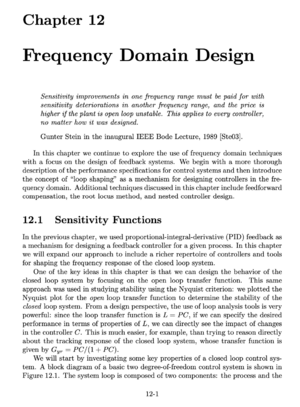Difference between revisions of "Frequency Domain Design"
Jump to navigation
Jump to search
m |
|||
| Line 4: | Line 4: | ||
|Previous chapter=PID Control | |Previous chapter=PID Control | ||
|Next chapter=Robust Performance | |Next chapter=Robust Performance | ||
| + | |First edition URL= | ||
|Chapter summary=In this chapter we continue to explore the use of frequency domain techniques with a focus on the design of feedback systems. We begin with a more thorough description of the performance specifications for control systems and then introduce the concept of “loop shaping” as a mechanism for designing controllers in the frequency domain. Additional techniques discussed in this chapter include feedforward compensation, the root locus method, and nested controller design. | |Chapter summary=In this chapter we continue to explore the use of frequency domain techniques with a focus on the design of feedback systems. We begin with a more thorough description of the performance specifications for control systems and then introduce the concept of “loop shaping” as a mechanism for designing controllers in the frequency domain. Additional techniques discussed in this chapter include feedforward compensation, the root locus method, and nested controller design. | ||
|Chapter contents=# Sensitivity Functions | |Chapter contents=# Sensitivity Functions | ||
Revision as of 21:28, 28 August 2021
| Prev: PID Control | Chapter 12 - Frequency Domain Design | Next: Robust Performance |
In this chapter we continue to explore the use of frequency domain techniques with a focus on the design of feedback systems. We begin with a more thorough description of the performance specifications for control systems and then introduce the concept of “loop shaping” as a mechanism for designing controllers in the frequency domain. Additional techniques discussed in this chapter include feedforward compensation, the root locus method, and nested controller design.
